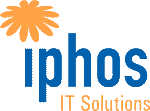ITIL vs. ITSM
When implementing IT management in an organisation, there is this common confusion between ITSM and ITIL. You must have asked yourself, „What is needed, ITSM or ITIL?“
The confusion is justified as these two terms seem to be identical but are actually different.
Let us talk about ITSM and ITIL, how different they are and their relationship.
What is ITIL?
ITIL stands for IT Infrastructure Library, which originated in the 1980s. The ITIL brand is owned by a company. It is a well-known framework for IT service management. There are dozens of frameworks and ITIL is the most popular. It focuses on aligning IT with business objectives.
The ITIL framework is divided into 5 core volumes:
- Service Strategy: Strategy Management for IT Services, Financial Management for IT Services, Service Portfolio Management, Demand Management and Business Relationship Management
- Service Design: Design Coordination, Service Level Management, Service Catalogue Management, Information Security Management, Supplier Management, IT Service Continuity Management, Availability Management and Capacity Management
- Service Transition: Knowledge Management, Change Management, Service Asset and Configuration Management, Transition Planning and Support, Release and Deployment Management, Service Validation and Testing and Change Evaluation
- Service Operation: Incident Management, Request Fulfilment, Event Management, Access Management and Problem Management
- Continual Service Improvement: The 7-Step Improvement Process
In addition, there are four functions that are all assigned to the Service Operation band: Service Desk, Technical Management, IT Operations Management and Application Management.
Apart from being a framework, ITIL has given ITSM important terminologies, e.g. Configuration Management Database (CMDB), Configuration Item (CI), Incident Management, Problem Management, Change Management, etc.
The ITIL framework offers the following advantages:
- ITIL drastically shortens the implementation time of ITSM.
- Ensures your IT is aligned with your business.
- It helps you manage business risks due to service interruptions.
- It sets a cross-industry standard for ITSM professionals.
It encompasses all activities and management techniques required to deliver IT services to customers. The activities include planning, designing, operating and controlling IT services.
What is ITSM?
ITSM is the abbreviation for IT Service Management. ITSM can be defined as the totality of measures and methods necessary to achieve the best possible support of business processes by the IT organisation. In this respect, ITSM describes the change in information technology towards customer and service orientation.
This is a comprehensible and common definition, but by no means the only one. Another can be found in the glossary of the current version of ITIL 2011, according to which ITSM means the implementation and management of quality IT services that meet the requirements of the business. This definition goes on to say that IT service management is carried out by IT service providers using an appropriate mix of people, processes and information technology.
The most important thing to understand about this approach is that it goes hand in hand with a departure from a purely technological approach to IT management, which traditionally revolved around variables such as the network or storage. In contrast, ITSM focuses on service delivery optimisation and the use of IT services.
Beyond the IT world, the book „Service Management: Strategy and Leadership in the Service Business“ by the Swedish researcher and consultant Richard Normann, published in 1984, is considered a kind of starting point for this line of thinking. In this sense, service management can be understood as a systematic method of managing services for customers – under a fixed cost and quality framework in each case. ITSM is the transfer of this concept to IT.
Here are some benefits of implementing ITSM:
- Customer satisfaction through better service delivery.
- Sophisticated workflows that lead to greater efficiency.
- Provides you with the ability to identify the root cause of problems.
- Reduces service delivery costs through proper resource utilisation.
How do you define the relationship between ITIL and ITSM?
There is a symbiotic relationship between ITSM and ITIL. ITIL shows you how to work effectively with ITSM by establishing best practices. While ITSM takes care of what to deliver and how to deliver it.
Conclusion
ITIL is synonymous with ITSM because of its popularity, hence the confusion. As you know, these two terms are different but complement each other. ITSM is the ‚what‘ and ITIL is the ‚how‘ of IT service delivery.
Contact us
Contact us if you are interested in our solutions. One of our employees will evaluate your ideas and provide first consulting. After that, we will send you an offer that is optimized for your specific needs.
Phone: +43 1 8698400
Email: office@iphos.com
Company
We are a strong international company – to bring the best IT solutions to you. We provide an outstanding full service in the areas of IT, ITSM, software development and web development for our customers.
IT-Infrastructure
As full service provider and sustainable company, we provide top solutions for maintenance, consulting, networks, Exchange, Linux- & Windows servers, and more.
Software development
State-of-the-Art software development from Vienna: we work on your ideal individual solutions in software, mobile apps, interface- and database development.
Web development
We rethought web development: we offer intranets & extranets, websites, e-commerce platforms, online calculators, newsletter systems and provide classical services like SEO, SEM, and more.

![]() Iphos IT Solutions GmbH
Iphos IT Solutions GmbH
![]() Arndtstrasse 89 / Top 22 1120 Vienna, Austria
Arndtstrasse 89 / Top 22 1120 Vienna, Austria